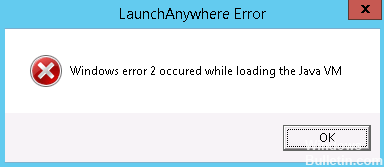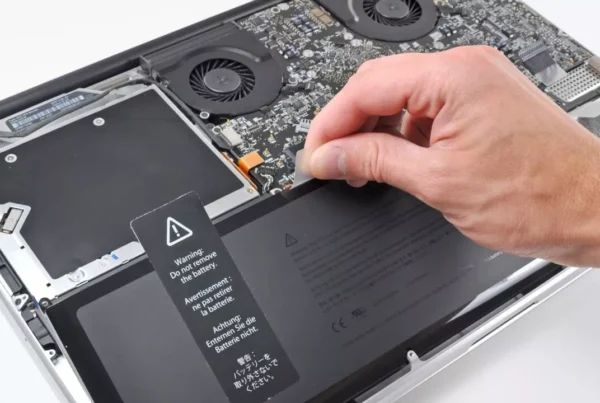RECOMMENDED: Click here to fix Windows errors and get the most out of your system performance
El error «Windows error 2 al cargar Java VM» de forma general ocurre cuando el Username intenta iniciar el software Launch Anywhere y otros programas que requieren un nombre de usuario y contraseña para operar. Parece que todos los programas que generan este problema usan el mismo backend que el software Launch Anywhere.
Windows Java Error 2 ′ has dozens of meanings, something about the 52 that you can find on the Internet. The most common is ERROR_FILE_NOT_FOUND found in winerror.h.
(*2*)
Causes of this error:
- Java JRE/JDK not installed
- JRE/JDK version 1.8.0_60 or higher installed
Temporarily delete "javapath
The first and easiest solution is to temporarily remove "javapath" from the Windows system variable "PATH". This prevents the installer from finding a Java virtual machine on the target machine, so it uses version 1.7 of the supplied Java virtual machine instead. This can be done as follows:
Step 1 – Start Windows with an account with administrator rights.
Step 2 – Open the Windows Control Panel. There are many different ways to do this, depending on whether you're using Windows 7 or Windows 8 and in which mode. In Windows 8, when you move the mouse pointer to the upper right corner, icons appear on the right side of the screen. You can then click the Search button (a magnifying glass), make sure the applications are selected, type control panel in the text box, and then click the Control Panel icon that appears. In Windows 7, click in the lower-left corner of the screen, then type control panel in the text box labeled Search programs and files.

Step 3: In Control Panel, select System and Security, then System. Then click Advanced System Settings on the left side of the dialog to open the System Properties dialog, with the Advanced tab selected. Click the Environment Variables… button at the bottom right of this dialog.
Step 4 – At the bottom of the dialog is a table called System Variables. Move your cursor down until you see the path in the Variable column. Click on this line to select it, then click the button below the table titled Modify. A small dialog box titled Edit System Variable will appear.
Step 5 – Left-click on the Variable Value text field and drag it to the left until you reach the first entry in the path. Entries are separated by a semicolon. Select the entry carefully: C:\ProgramData\Oracle\Java\javapath; to make sure you have the semicolon at the end. It's usually the first entry, but it can happen anywhere along the way. After you pick and choose, click the Delete button on your keyboard to delete this entry from the route.
Note: The Windows C:ProgramData folder is hidden by default. When you open drive C to view files with Explorer, click View at the top and check the Hidden Items box to make the ProgramData folder visible. The C:ProgramData Oracle Java javapath folder contains symbolic links to Java executable files. You can right click on it and choose Properties to see which executables it refers to.
Step 6: Click the OK button in the Edit System Variable dialog, click OK in the Environment Variables dialog, and then click OK in the System Properties dialog.
Update Java
Check that your version of Java is up to date. If not, update Java to the latest version. This makes it possible for users to update Java on Windows.
- Users can check their Java versions using the Java Control Panel. To open it, press Windows + Hotkey R.
- In Run, type “Control Panel” and click the OK button.
- Then click Java in Control Panel to open the window below.
- Click the About button to open the version details. If an update is required, first uninstall the previous version of Java.
Start the installation program with the LAX_VM parameter.
This method is generally considered the best solution for this type of problem. You can avoid the “Windows error 2 loading Java virtual machine” error by starting the installer at a command prompt with the LAX_VM parameter.
https://www-01.ibm.com/support/docview.wss?uid=swg22008153
RECOMMENDED: Click here to fix Windows errors and get the most out of your system performance






